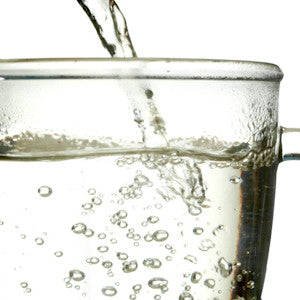Water and Tea Brewing Tips
Posted by SALINA - TEAS.COM.AU

We spend a lot of time getting the right tea leaves and pondering which teapot to get, but do you think much about how to brew the tea in front of you, before you put the kettle on?
Water for tea brewing and brewing itself must be the most neglected aspects in everyday tea making. You want to start having nicer tea to start your day? Read on.
Let’s start with trace back to your daily tea making ritual:
OK, fill the kettle,
you have chosen the perfect cup for the day,
a teaspoon of tea your favourite tea,
into the teapot,
the water is boiling,
then the kettle switches itself off,
yup, time to pour in the water…

Are we wrong!
Water for Brewing Tea
Although we stress that tea making is a subjective art, there are some general rules:
- Use roughly a teaspoonful of dried tea per cup.
- The finer (delicate) the leaf, the cooler the water should be for the tea to be brewed in; and the more chopped up the leaf, the shorter the brewing time.
“Jumpy” Boiling water (pictured right) only suits brewing black tea and pu-erh.
The best time to use boiling water is when the water in your kettle just about to start making larger bubbles and getting louder – this is the time when the water has lots of oxygen.
Live water is absolutely essential to making a fresh cup.
Black tea and Pu-erh takes 2-3 minutes to brew. If you like your tea with milk, go for 5 minutes.
However, if green tea is your thing, it is time to stop boiling the leaves! Green tea is more delicate and needs cooler water. We are not scientists and don’t use an apparatus such as a thermometer in the kitchen. The best way to cool the water is after the kettle has switched itself off, pour the water into the cups the tea will be served, THEN pour the water into the teapot (with leaves in it already). This process cools down the water significantly and is a pretty good way for making a cup of green tea.
Please don’t overbrew your green tea!
If you find green tea is tasting bitter, and you are brewing it over 1-2 minutes, you are killing your green tea and making it bitter!
Oolong sits in between green and black tea categories and it sort of depends how unfermented (green) the leaves are – so generally hot water will do the trick.
White tea? Do the same steps as green tea, but wait a few minutes before pouring the water from kettle to cups. White tea should be brewed longer, especially bud-types such as Silver Needle.
Herbal and fruit infusions are a pretty standard type of operation. Hot water in, 3-5 minutes generally.
What else?
If you have a lid or saucer handy, cover your mug if you are brewing the tea in a mug.
Warming cups?
(pour some hot water into the cups and discard the water before use)
Not absolutely necessary – but it will keep the tea warm longer, just like in good restaurants they warm the plates before using them to serve food so your food stays warmer longer while you enjoy.
Rinsing tea?
No, don’t be silly!
Tea is not actually dirty but some may be prefer ditching the first quick infusion to take the “sharpness” and acidity (from caffeine) out of the tea. It is a good practice if you prefer your cuppa to have less caffeine (caffeine is water soluble).
Making Iced Tea
Making iced tea?
Well this one we have lots of input from our customers ? here are a couple of pretty good methods:
- The long way: make the tea slightly stronger, strain, cover and chill. If you want ice, make tea ice cubes with the same infusion (or a different infusion for, say Strawberry Cream ice cubes in Jasmine Green Tea).
- The short way: make the tea double strength, strain and pour into a glass half filled with ice.
So perish that thought: darker (blacker) the better!
My mom often says to me tea made from tea shops are always tasting better than the one she makes herself (knowing she always let the tea just sit there for hours after brewing) – I dedicate this article of “Water for Tea Brewing” to her 
Check out some tasty tea at Teas.com.au and don’t forget to brew your tea right 

AUSTRALIA'S FINEST LOOSE LEAF TEAS
Explore Australia's largest selection of Premium Teas & All-Natural Organic Herbal Blends.


